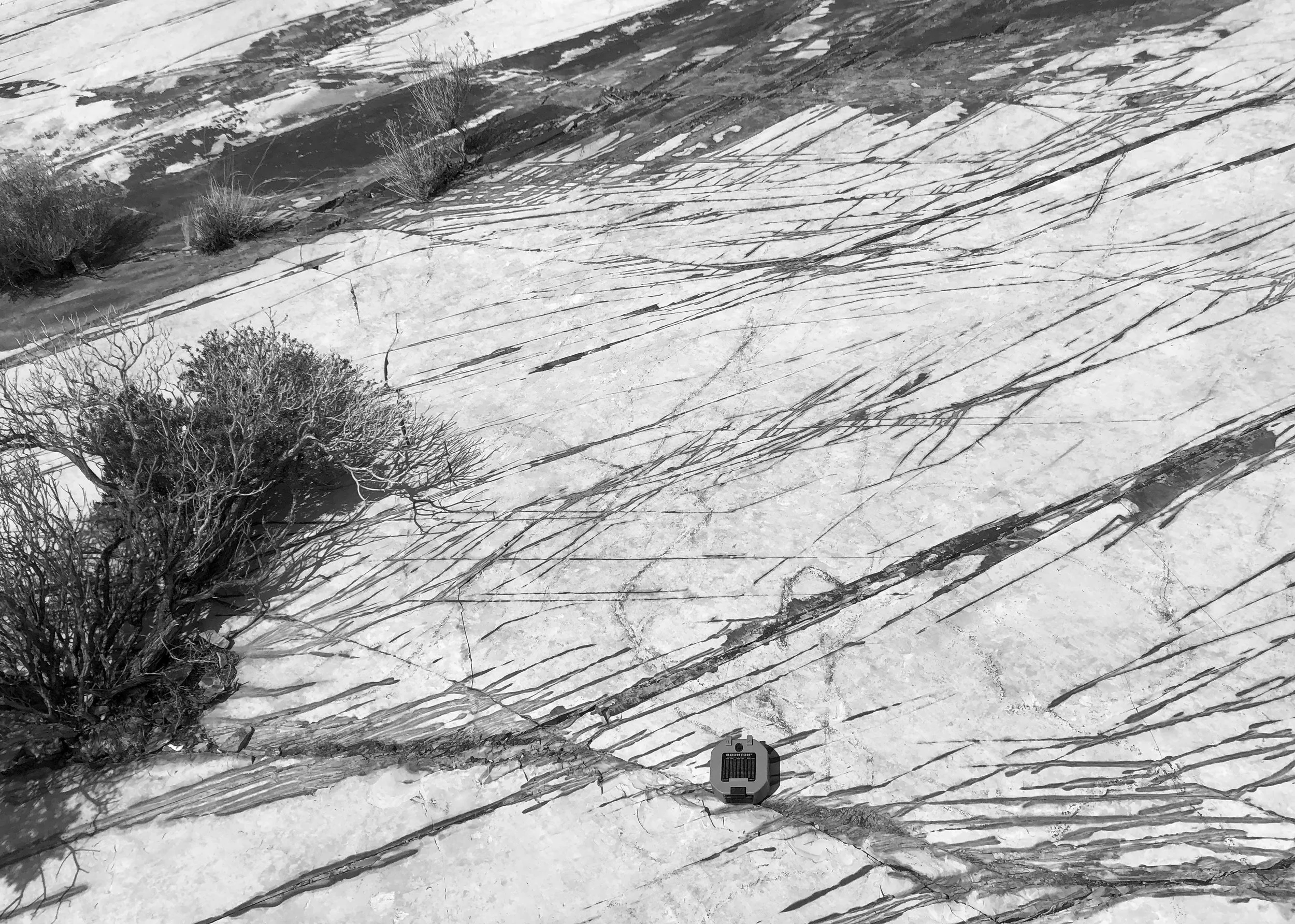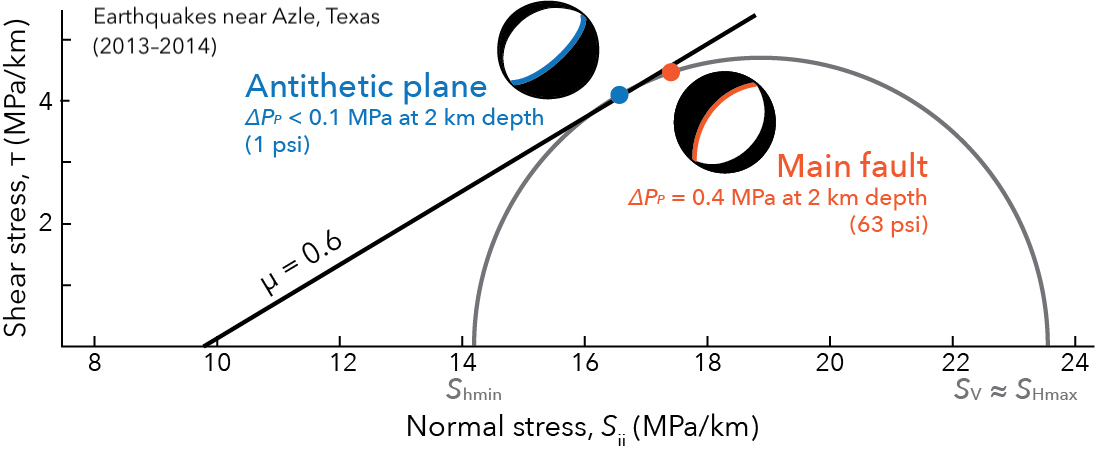Stress
Induced seismicity, geodynamics, fault zones, unconventional energy development
Stress (force applied over an area) causes materials to deform. In addition to measuring and mapping the state of stress in the Earth’s crust at scales ranging from sedimentary basins to continents, I focus on four main applications of these data:
Understanding and managing earthquake hazards associated with hydraulic fracturing, wastewater disposal, energy storage, and carbon sequestration,
Improving efficiency of hydrocarbon and geothermal resource development,
Understanding the causes of intraplate deformation and sources of stress on the continents, and
Characterizing the physics and geology of fault zones.
Papers
The importance of nodal plane orientation diversity for earthquake focal mechanism stress inversions
Lundstern et al. (2023)
Colored points represent the stress estimates from inversions of groups of synthetic focal mechanisms having variable nodal plane orientation diversity (green is best). Accurate results would fall on the black line, which are the input (“true”) stress values. It’s clear from these plots that low orientation diversity can result in badly inaccurate stress inversion results, even at low noise levels.
State of stress in areas of active unconventional oil and gas development in North America
Lund Snee & Zoback (2022)
Calculators at the bottom of this page allow you to estimate bounding principal stress magnitudes from Aφ (as in the figure to the left) or determine Aφ from stress magnitudes.
Multiscale variations of the crustal stress field throughout North America
Lundstern & Zoback (2020)
Pore pressure threshold and fault slip potential for induced earthquakes in the Dallas-Fort Worth area of north central Texas
Hennings et al. (2021), employing a pore pressure model by Gao et al. (2021) and a 3D fault model by Horne et al. (2020)
Injection‐induced seismicity and fault‐slip potential in the Fort Worth Basin, Texas
Hennings et al. (2019), using a 3D fault model by Horne et al. (2020). Figure is from my dissertation, based on the data and results from this paper.
State of stress in the Permian Basin, Texas and New Mexico: Implications for induced seismicity
Lund Snee & Zoback (2018). An updated version with additional figures is available in Chapter 4 of my dissertation.
Predicted and observed shear on preexisting faults during hydraulic fracture stimulation
Zoback & Lund Snee (2018). Figure is from my dissertation.
State of stress in Texas: Implications for induced seismicity
Lund Snee & Zoback (2016). An updated version with additional figures is available in Chapter 3 of my dissertation.










